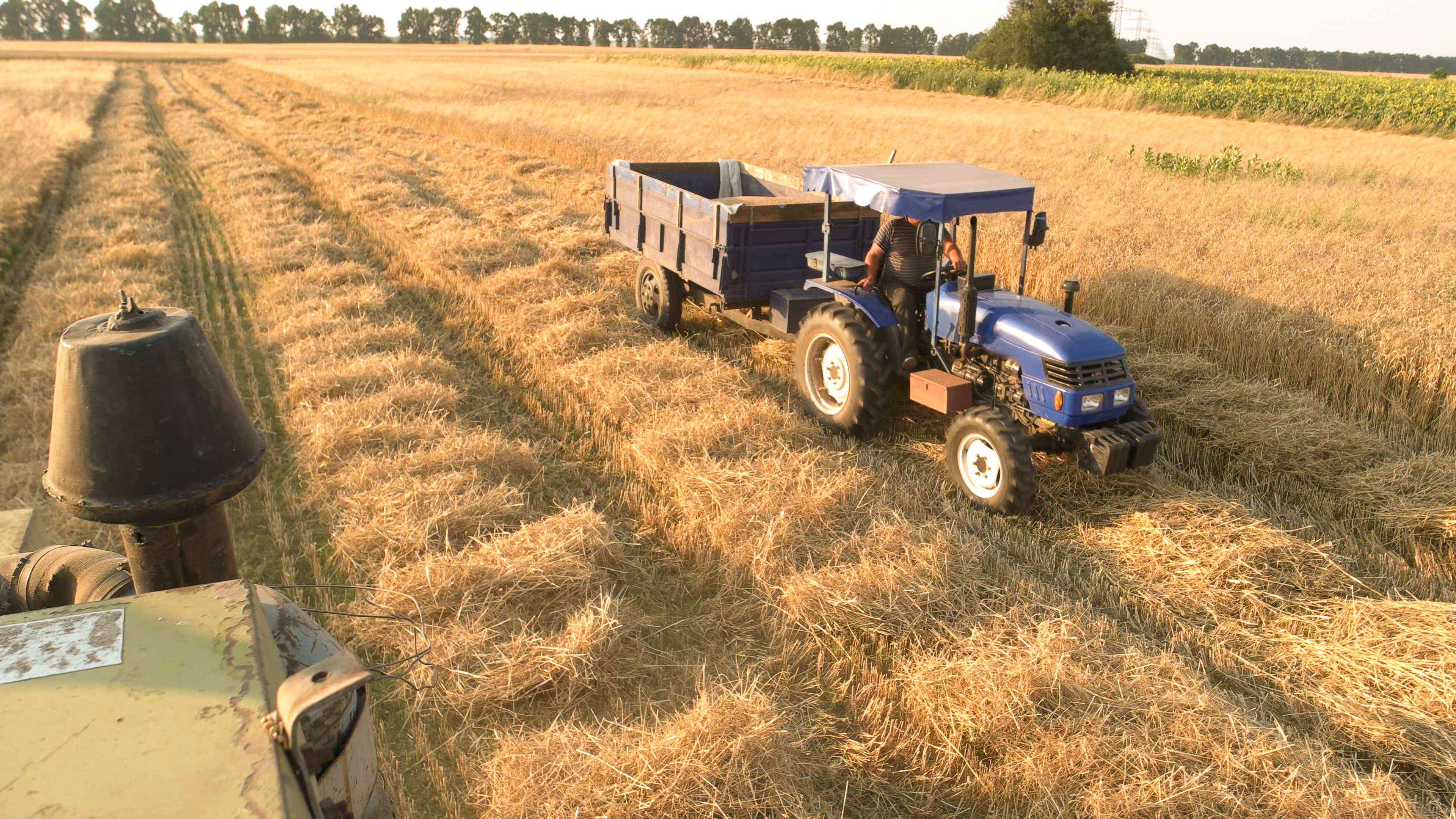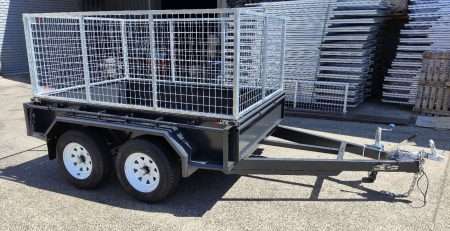
Taking Your Mower on the Road: The Best Trailers for Riding Mowers
Introduction to Riding Mower Trailers
When it comes to efficiently transporting heavy or bulky items around your yard or property, a riding mower trailer can be a game-changer. These trailers are specifically designed to be attached to a riding mower or garden tractor, allowing for easy transportation of various materials, tools, and equipment. Let’s explore what a riding mower trailer is and the benefits it offers.
What is a riding mower trailer?
A riding mower trailer is a type of trailer that is designed to be towed behind a riding mower or garden tractor. It provides additional storage and hauling capacity, allowing you to transport heavy or bulky items with ease. These trailers typically feature a sturdy frame, wheels, and a hitch that securely attaches to the back of the riding mower.
With a riding mower trailer, you can transport materials such as mulch, compost, firewood, gardening tools, and other supplies around your yard or property. This not only saves time and effort but also reduces the need for multiple trips and manual labor. Whether you have a small residential lawn or a large estate, a riding mower trailer can significantly increase the convenience and efficiency of your lawn maintenance tasks (My All Green).
Benefits of Using a Riding Mower Trailer
The use of a riding mower trailer offers several benefits for homeowners, small business owners, and landscaping professionals alike. Here are some key advantages:
- Convenience and Efficiency: A riding mower trailer eliminates the need for multiple trips when transporting heavy or bulky items. It allows you to efficiently complete tasks by carrying more materials at once. This is particularly beneficial for larger properties or estates where there is a need to move heavy items regularly (The Spruce).
- Versatility: A riding mower trailer is a versatile tool for various landscaping and yardwork tasks. It enables you to transport materials like mulch, compost, gardening tools, and even firewood. The ability to easily move these items around your property streamlines your workflow and makes your outdoor projects more manageable (The Spruce).
- Time and Labour Savings: By utilising a riding mower trailer, you can save time and reduce manual labor. Instead of manually carrying heavy items or making multiple trips, you can efficiently load them onto the trailer and tow them with your riding mower. This frees up valuable time and energy for other tasks (The Spruce).
- Increased Capacity: Riding mower trailers come in various sizes and weight capacities, allowing you to choose the one that suits your needs. Whether you have a small residential lawn or a larger property, there is a trailer available to accommodate your requirements. This flexibility ensures that you can transport the necessary materials without overloading the trailer or your riding mower (Amazon).
By utilising a riding mower trailer, you can enhance the functionality of your riding mower or garden tractor and make your outdoor tasks more efficient. Whether you need to haul equipment, transport heavy loads, or carry materials for landscaping and gardening, a riding mower trailer is a valuable addition to your lawn care arsenal.
Choosing the Right Trailer for Your Riding Mower
When it comes to selecting the right trailer for your riding mower, there are several factors to consider. The size and weight capacity of the trailer should align with your specific needs and the capabilities of your riding mower. It’s also important to ensure compatibility between the trailer and your mower. Let’s explore these considerations in more detail.
Considerations for Trailer Size and Weight Capacity
The size and weight capacity of the trailer will vary depending on the specific riding mower model. Before purchasing a trailer, it’s crucial to determine the maximum weight your mower can tow and the dimensions of your mower deck. This information will help you select a trailer that can safely accommodate your mower and any additional equipment or materials you need to transport.
Choosing a trailer with an appropriate weight capacity is essential to prevent overloading, which can strain both the trailer and your riding mower. It’s important to strike a balance between the load you need to carry and the towing capabilities of your mower. Referencing the manufacturer’s guidelines for your mower’s towing capacity is highly recommended to ensure safe operation.
Compatibility with Your Riding Mower
Some riding mowers come with built-in hitches designed to tow trailers, while others may require an attachment to be added. It’s necessary to examine the hitch on your riding mower and ensure it is compatible with the trailer you intend to purchase. Different types of hitches, such as ball hitches or pin hitches, may be used, so be sure to choose a trailer that matches the hitch type on your mower.
Furthermore, consider the height of the hitch receiver on your riding mower. The trailer tongue should align properly with the hitch receiver to ensure a secure connection. If required, you may need to use a hitch adapter or extension to achieve the appropriate alignment.
Types of Riding Mower Trailers
Riding mower trailers come in various types to suit different needs and applications. Here are a few common types of riding mower trailers:
- Utility trailers: versatile trailers suitable for a wide range of tasks, such as hauling equipment and tools, transporting heavy loads, and carrying materials for landscaping and gardening.
- Dump trailers are designed for easy unloading of materials by tilting the trailer bed. Dump trailers are ideal for tasks that involve moving bulk items such as mulch, compost, or debris.
- Flatbed trailers: These trailers feature a flat, open deck without sides or rails, providing ample space for large or irregularly shaped items. Flatbed trailers are commonly used to transport equipment, machinery, or oversized materials.
When selecting a trailer type, consider your specific needs and the terrain of your property. The type of tasks you frequently perform will dictate the features and capabilities you require from the trailer.
By carefully considering the size and weight capacity of the trailer, ensuring compatibility with your riding mower, and exploring the various types of riding mower trailers available, you can make an informed decision and choose the right trailer for your needs. Remember to consult the manufacturer’s guidelines for your riding mower and the trailer to ensure safe and efficient operation.
Safe Operation and Maintenance of Riding Mower Trailers
When using a trailer for your riding mower, it is crucial to prioritise safety by following proper operation and maintenance practices. This section will discuss three important aspects: proper weight distribution and load securing, maintaining and cleaning the trailer, and following the manufacturer’s guidelines.
Proper weight distribution and load securing
Achieving proper weight distribution and securing the load on your riding mower trailer is essential for safe operation. Uneven weight distribution can affect the stability of the trailer and the riding mower, potentially leading to accidents or damage to the equipment. To ensure balanced weight distribution:
- Place heavier items closer to the axle of the trailer to prevent overloading the front or rear end.
- Distribute the load evenly from side to side to maintain stability during transport.
- Secure the load properly using straps, ropes, or tie-downs to prevent shifting or falling off during transportation.
By following these guidelines, you can maintain stability and minimise the risk of accidents while operating your riding mower with a trailer.
Maintaining and cleaning the trailer
Regular maintenance and cleaning of your riding mower trailer are crucial for its longevity and safe operation. Here are some maintenance tips to consider:
- Inspect the tyres regularly for proper inflation, tread wear, and signs of damage. Replace any worn or damaged tyres promptly to ensure safe transportation.
- Lubricate moving parts such as hinges, axles, and couplers to prevent rust and ensure smooth operation.
- Check the trailer’s lights, brakes (if applicable), and electrical connections to ensure they are functioning properly.
- Inspect the trailer for any signs of wear, damage, or loose bolts. Address any issues promptly to prevent further damage and ensure safe operation.
Cleaning the trailer is equally important to remove dirt, debris, and corrosive substances that can affect its structural integrity. Regularly wash the trailer with water and mild detergent, paying attention to areas prone to buildup, such as the undercarriage and wheel wells. Rinse thoroughly and allow the trailer to dry completely before storing it.
Following the manufacturer’s guidelines
To ensure safe operation and proper maintenance of your riding mower trailer, it is crucial to follow the manufacturer’s guidelines. The manufacturer’s guidelines provide specific instructions related to your trailer model, including weight limits, recommended maintenance intervals, and safety precautions. By adhering to these guidelines, you can maximise the performance and longevity of your trailer while minimising the risk of accidents.
Always refer to the owner’s manual or manufacturer’s documentation for detailed information on safe operation, maintenance procedures, and any specific recommendations for your riding mower trailer. If you have any questions or concerns, contact the manufacturer or consult a professional for guidance.
By practicing proper weight distribution and load securing, maintaining and cleaning your trailer regularly, and following the manufacturer’s guidelines, you can ensure the safe operation of your riding mower trailer. Prioritising safety and proper maintenance will not only protect your equipment but also contribute to a more enjoyable and efficient hauling experience.
Types of Riding Mower Trailers
When it comes to trailers for riding mowers, there are several types available, each designed to cater to different needs and tasks. Let’s explore three common types of riding mower trailers: utility trailers, dump trailers, and flatbed trailers.
Utility Trailers
Utility trailers are versatile and can be used for a wide range of tasks. They are suitable for hauling equipment, tools, and supplies, making them a popular choice for landscaping and gardening enthusiasts. Utility trailers often come with a spacious bed that provides ample room for carrying various items. They can be easily customised with racks or compartments to accommodate specific needs and improve organisation.
These trailers are available in different sizes and weight capacities, allowing you to choose one that suits your requirements. Whether you need to transport gardening equipment, plants, or other materials, a utility trailer offers the flexibility and convenience to get the job done. Explore a variety of utility trailers for riding mowers here.
Dump Trailers
Dump trailers are specifically designed for transporting loose materials such as soil, gravel, or mulch. They feature a hinged bed that can be raised to dump the contents easily. Dump trailers offer the advantage of effortless unloading, making them ideal for tasks that involve frequent loading and dumping.
These trailers come in various sizes and weight capacities to accommodate different hauling needs. Whether you’re working on a landscaping project or need to transport bulk materials, a dump trailer can streamline the process and save you time and effort. Discover a range of dump trailers suitable for riding mowers here.
Flatbed Trailers
Flatbed trailers provide a large, flat surface for carrying bulky items such as logs, rocks, or large plants. They offer a higher weight capacity compared to utility and dump trailers, making them suitable for heavy-duty tasks. Flatbed trailers are particularly useful when you need to transport oversized or irregularly shaped items that may not fit within the confines of other trailer types.
These trailers are available in various sizes and configurations, allowing you to choose one that best suits your needs. The spacious and open design of flatbed trailers provides the flexibility to transport a wide range of materials and equipment. Explore a selection of flatbed trailers designed for riding mowers here.
By understanding the characteristics and advantages of different types of riding mower trailers, you can select the one that aligns with your specific hauling requirements. Whether you need versatility with a utility trailer, the convenience of a dump trailer, or the capacity of a flatbed trailer, there’s a suitable option available to help you transport your equipment, materials, and tools efficiently.
Practical Uses of Riding Mower Trailers
A riding mower trailer is a valuable tool for various tasks, offering convenience and efficiency in maintaining a garden or yard. Let’s explore some practical uses of riding mower trailers.
Hauling equipment and tools
A riding mower trailer is an excellent choice for hauling equipment and tools around your property. Whether you need to transport gardening tools, lawnmowers, or other landscaping equipment, a trailer for a riding mower provides ample space for secure and organised transportation. With the help of a hitch pin, attaching the trailer to your riding mower or garden tractor is quick and easy.
Transporting heavy loads
One of the key advantages of a riding mower trailer is its ability to transport heavy loads. From mulch and compost to firewood and rocks, a properly sized trailer can handle the weight and volume of these materials. This saves you time and effort by allowing you to transport larger quantities in one trip, especially beneficial for larger properties or estates where there is a need to move heavy items regularly.
When selecting a riding mower trailer, consider its size and weight capacity. Choosing a trailer that suits your needs and the terrain of your property ensures safe and efficient transportation of heavy loads.
Carrying materials for landscaping and gardening
A trailer for a riding mower is particularly useful for landscaping and gardening tasks. It allows you to transport materials such as mulch, compost, gardening soil, and plants with ease. This makes it a versatile tool for enhancing your outdoor space.
By using a riding mower trailer, you can efficiently move materials from one area of your property to another, saving time and reducing physical strain. The convenience of having a trailer for your riding mower enables you to complete landscaping and gardening projects more efficiently.
Remember to consider the type of trailer that suits your specific needs. Utility trailers are versatile and can be used for various purposes; dump trailers are ideal for transporting loose materials; and flatbed trailers provide a large, flat surface for carrying bulky items. Choosing the right type of trailer ensures that it meets your requirements and enhances the efficiency of your tasks.
In summary, a riding mower trailer offers practical uses for hauling equipment and tools, transporting heavy loads, and carrying materials for landscaping and gardening. It adds convenience and efficiency to your yard maintenance tasks, allowing you to complete projects more effectively. Choose a trailer that fits your needs, ensuring compatibility with your riding mower and providing the necessary capacity for your specific tasks.
Tips for Choosing and Maintaining a Riding Mower Trailer
When it comes to selecting and maintaining a trailer for your riding mower, there are several important factors to consider. This section will provide you with tips to help you make an informed decision when choosing a trailer and offer maintenance guidelines for longevity and safety.
Factors to Consider When Selecting a Trailer
- Size and Weight Capacity: The size and weight capacity of the trailer are crucial considerations. The trailer should be able to accommodate the load you intend to carry without putting excessive strain on your riding mower. Trailers can vary in size, ranging from small carts that hold around 10 cubic feet to larger trailers that can hold up to 40 cubic feet or more (My All Green).
- Compatibility with Your Riding Mower: Ensure that the trailer you choose is compatible with your specific riding mower. Some riding mower brands offer trailers that are specifically designed to fit their models, while others may require a universal trailer hitch or adapter for attachment (My All Green).
- Type of Trailer: There are different types of trailers available for riding mowers, including utility trailers, dump trailers, and flatbed trailers. Consider the specific tasks you need the trailer for and choose the type that best suits your needs. Utility trailers are versatile and can be used for various purposes; dump trailers are ideal for transporting loose materials; and flatbed trailers provide a large, flat surface for carrying bulky items (Mowers Direct).
Maintenance Tips for Longevity and Safety
- Regular Cleaning: Proper maintenance and care of the trailer are essential for its longevity and performance. Regularly clean the trailer to remove dirt, debris, and corrosive substances. This helps prevent rust and keeps the trailer looking its best.
- Lubrication: Lubricate the moving parts of the trailer, such as hinges, wheels, and couplers, to ensure smooth operation. Use a suitable lubricant to reduce friction and prevent wear and tear.
- Tyre Inspection: Regularly inspect the tyres for signs of wear or damage. Check the tyre pressure and ensure it meets the manufacturer’s recommendations. Replace any worn or damaged tyres promptly to maintain safe operation.
- Load Securing: When loading items onto the trailer, ensure they are properly secured to prevent shifting during transport. Use straps, bungee cords, or tie-downs to secure the load, keeping in mind weight distribution and balancing the trailer to prevent tipping.
- Electrical Connections: If your trailer has electrical connections for lights or brakes, inspect them regularly for any loose or damaged wiring. Ensure the connections are secure and functioning correctly.
- Storage: When not in use, store the trailer in a dry and secure location to protect it from the elements. Consider covering the trailer to provide additional protection from dust, debris, and sunlight.
By considering these factors when selecting a trailer and following proper maintenance practices, you can ensure that your riding mower trailer serves you well for years to come. Remember to refer to the manufacturer’s guidelines for specific maintenance instructions and safety precautions.
Author
I am Rahatul Ashiq Tamal. Another author of Muscle Trailers. Muscle Trailers is a well-known trailer brand in Sydney, Melbourne & Adelaide

How to Mount a Spare Tire on Your Trailer: A Simple Step-by-Step Guide
Trailer service centers receive over 1 million phone calls and 1.3 million emails each year about trailer maintenance problems....

How to Fix RV Roof Leaks: Simple Roof Leak Detection Guide for Beginners
Did you know DIY RV roof repairs can cost under $50? But undetected leaks could lead to substantially higher repair...

Starting a Food Truck Business in Australia: From Trailer Selection to Launch
The Australian mobile food market has evolved into a billion-dollar industry. This makes a food truck...
